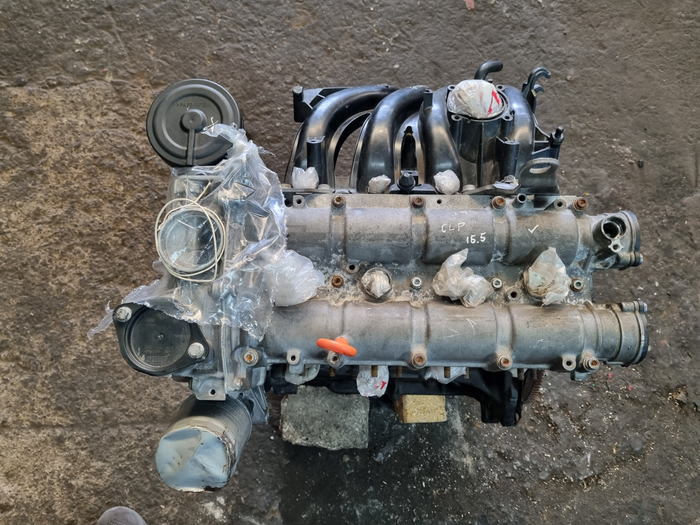Achieve long-term reliability with the right clp engine.
Achieve long-term reliability with the right clp engine.
Blog Article
Exactly How a Clp Engine Can Improve Efficiency in Numerous Industries
The arrival of CLP engines notes a significant change in operational efficiency throughout different sectors, driven by their capacity to optimize gas consumption and decrease downtime. Industries such as manufacturing and logistics stand to acquire substantially from their durable style and regular power result, which assure to improve operations and boost performance. As organizations significantly prioritize sustainability alongside efficiency, the function of CLP engines ends up being much more vital. What remains to be seen is how these improvements will certainly form the future landscape of industrial operations and their impact on broader economic trends (clp engine).
Overview of CLP Engines
CLP engines, or Constant Fluid Propellant engines, represent a considerable improvement in propulsion innovation, especially for area applications. These engines utilize a continual feed system that permits the sustained expulsion of propellant, leading to boosted efficiency and performance contrasted to standard solid or hybrid propulsion systems. By maintaining a consistent flow of fluid propellant, CLP engines can attain much more specific drive control, which is vital for maneuvering spacecraft in numerous goal circumstances.
The style of CLP engines integrates innovative materials and innovative fuel administration systems. clp engine. This leads to decreased weight and enhanced dependability, essential variables for long-duration area objectives. The continuous operation reduces the danger of burning instability, an usual challenge in traditional rocket engines.

Benefits in Production
The manufacturing of Continual Fluid Propellant (CLP) engines presents numerous noteworthy advantages that boost both performance and cost-effectiveness. Among the primary benefits is the structured production procedure, which decreases the complexity related to traditional propulsion systems. By using fluid propellant, producers can accomplish higher accuracy in engine performance, resulting in enhanced energy output and decreased waste.
In addition, CLP engines assist in a greater degree of modularity, permitting less complicated assimilation right into various manufacturing lines. This flexibility can significantly reduce lead times and boost general operational adaptability. The usage of CLP innovation also has a tendency to decrease the requirement for considerable maintenance as a result of fewer moving components, which equates right into reduced downtime and operational costs.

Applications in Logistics
Leveraging Continual Liquid Propellant (CLP) engines in logistics supplies substantial benefits in operational effectiveness and reliability. These engines supply a durable service for different transportation requirements, enabling the seamless motion of products throughout vast distances. The inherent layout of CLP engines enables constant power result, which equates into smoother and extra predictable transport routines.
One of the key applications of CLP engines in logistics is in heavy-duty freight transportation, where they can drive both ground and airborne cars. Their ability to maintain high efficiency under differing tons problems guarantees that shipment timelines are satisfied, therefore boosting customer satisfaction. In addition, CLP engines can be integrated right into automated logistics systems, helping with real-time monitoring and optimizing course planning.
Additionally, the toughness of CLP engines minimizes maintenance downtime, enabling logistics firms to maximize their functional capabilities. This is specifically valuable in warehousing procedures, where performance in handling and carrying items is vital. As logistics remains to evolve, the combination of CLP why not look here engines stands for a forward-thinking technique that not only improves performance however also sustains the industry's growing demands for integrity and speed.
Influence On Energy Effectiveness
Exactly How do Continual Liquid Propellant (CLP) engines boost energy effectiveness in transportation? CLP engines make use of a regular flow of fluid gas, maximizing combustion procedures and maintaining a secure drive outcome. This layout minimizes energy losses connected with traditional burning engines, where fuel delivery can vary and cause inadequacies.
The constant operation of CLP engines enables for a more effective thermal cycle, resulting in higher specific impulse contrasted to standard engines. clp engine. This translates to lowered gas consumption for the exact same quantity of job done, substantially decreasing functional prices across various transportation markets, consisting of aeronautics and maritime industries
Furthermore, the capability of CLP engines to preserve ideal performance under varying lots problems lowers the need for frequent acceleration and slowdown, further enhancing fuel efficiency. Improved power efficiency not only contributes to cost financial savings yet additionally brings about decrease greenhouse gas exhausts, straightening with international sustainability objectives.
Future Trends and Innovations
Emerging improvements in Constant Liquid Propellant (CLP) engine innovation guarantee to transform the landscape of transportation performance and sustainability. As sectors pivot towards greener options, CLP engines stand at the forefront, integrating cutting-edge products and style approaches that enhance performance while decreasing ecological effect.
One of one of the most appealing patterns is the adoption of hybrid systems that combine CLP engines with renewable resource sources. This harmony can maximize fuel intake and minimize discharges, aligning with international sustainability goals. Innovations in computational pop over here fluid characteristics (CFD) are helping with the layout of even more aerodynamically efficient engines, leading to minimized drag and improved gas efficiency.
In addition, the development of clever monitoring systems is established to enhance functional efficiencies. These systems take advantage of data analytics and IoT innovation to maximize engine performance in real-time, making certain that the engines operate within their most effective specifications.
As research remains to discover alternative propellant formulas-- such as biofuels and artificial gas-- the future of CLP engines looks promising. By utilizing these developments, sectors can not only boost their effectiveness however likewise contribute dramatically to a cleaner, extra sustainable future in transportation.
Final Thought
To conclude, CLP engines stand for a substantial advancement in performance across several sectors. Their ability to enhance gas consumption and minimize functional prices, combined with a continual feed system, enhances power outcome and functional reliability. The integration of sophisticated products and less relocating parts reduces maintenance demands, while placement with sustainability goals positions CLP engines as a crucial technology for the future. Continued technology in this area assures more improvements in performance and ecological efficiency.
Report this page